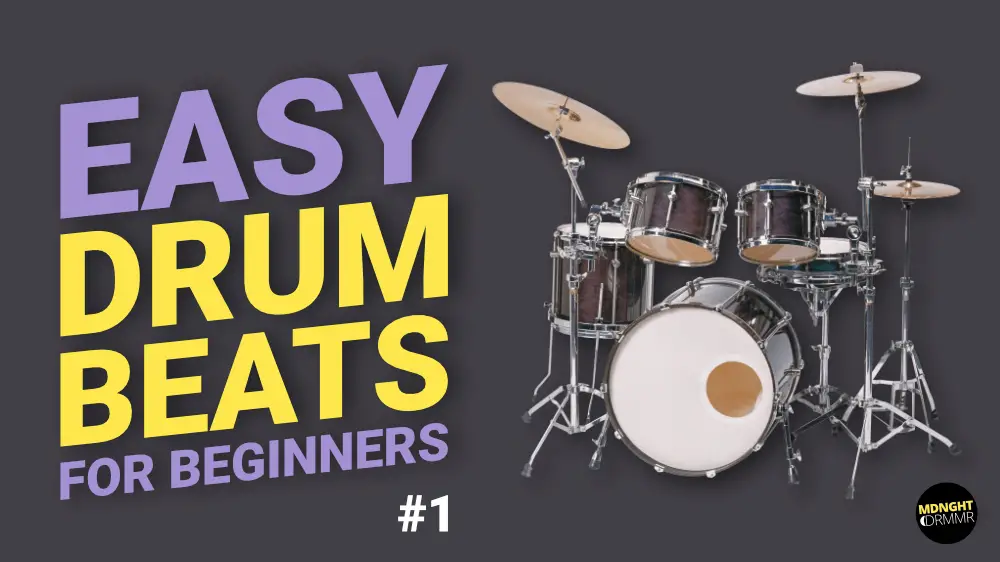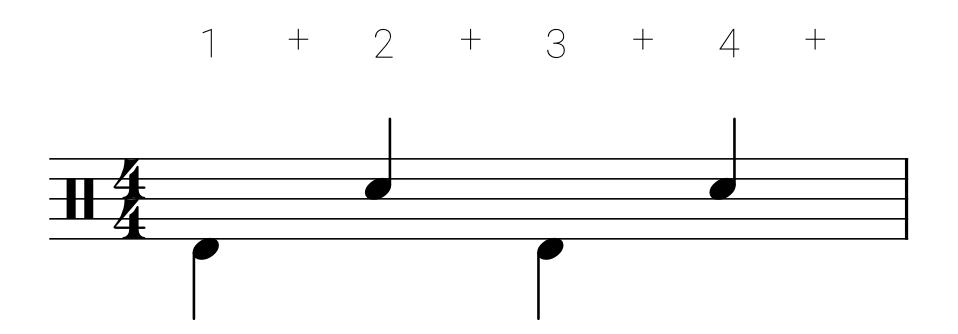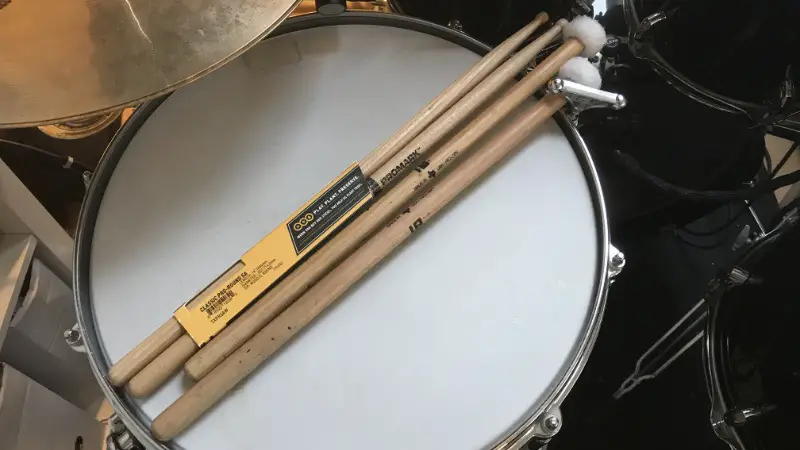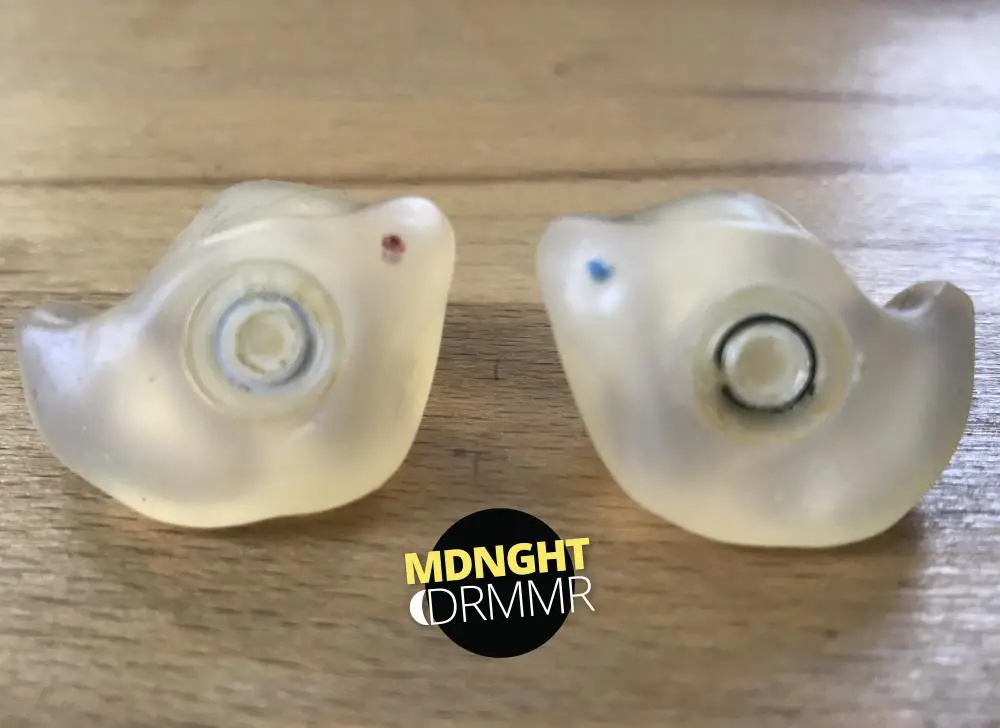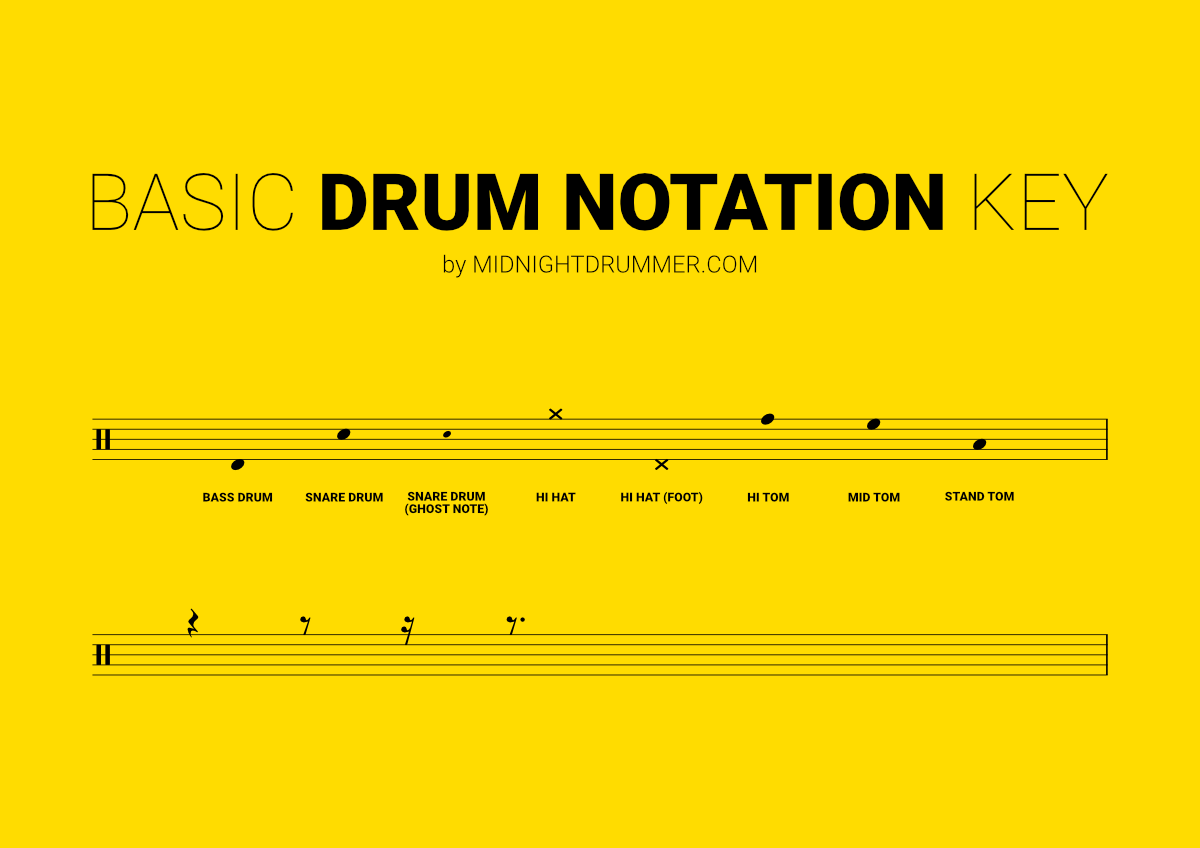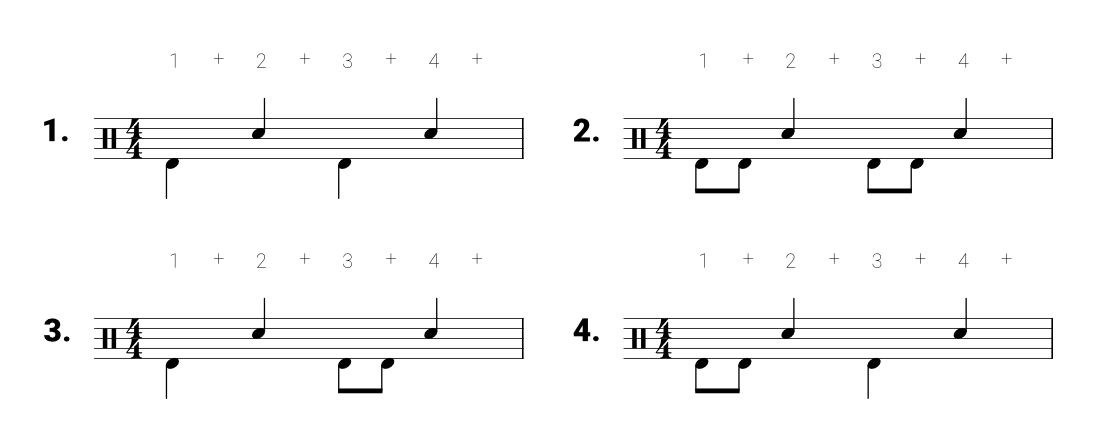Good morning, and thanks for visiting Midnightdrummer.com today!
The single stroke roll is probably the most natural drum rudiment you can imagine.
Most drummers play
RLRL RLRL RLRL RLRL or LRLR LRLR LRLR LRLR
even before they ask themselves the question:
What are drum rudiments?
To help you improve this simple drum rudiment, this blog post contains 16 easy single stroke roll exercises, including a free PDF download.
If you want to learn more, please sign up for a 30 days free trial clicking this link.
Sounds good?
Here are the contents:
This is what you need to practice the exercises
This is what you will need to play along to the single stroke roll exercises in the video above:
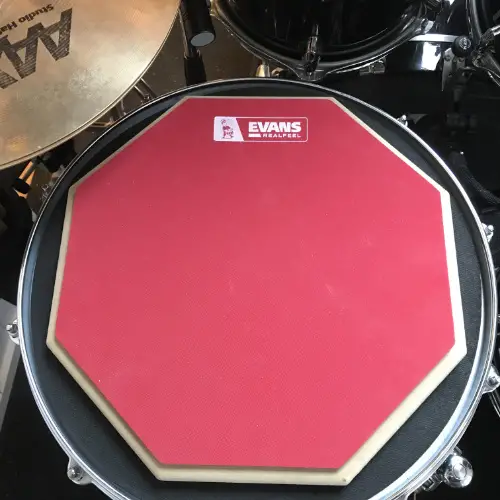
Drum practice pad
If you like to practice your drum rudiments no matter where you are and what time it is, a drum practice pad like the Evans Reel Feel is really useful.
Of course, you can play any drum rudiment on any surface available; snare drum, hi-hat, pillow and so on.
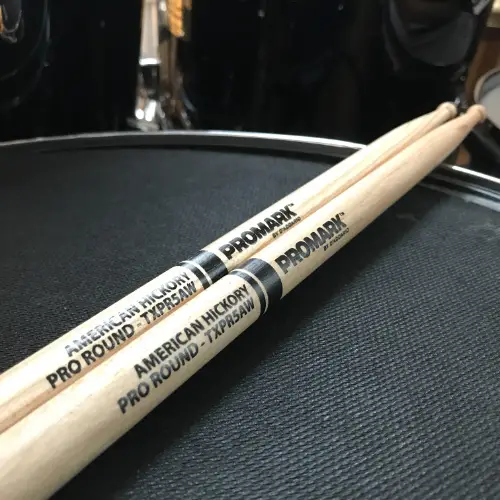
Drumsticks
Of course, you need a pair of drumsticks. If you don't know how to choose a pair that fits your drumming, just have a look at this blog post about the best drumsticks for beginners.
In case you require an all-time classic fast, just click the button below.
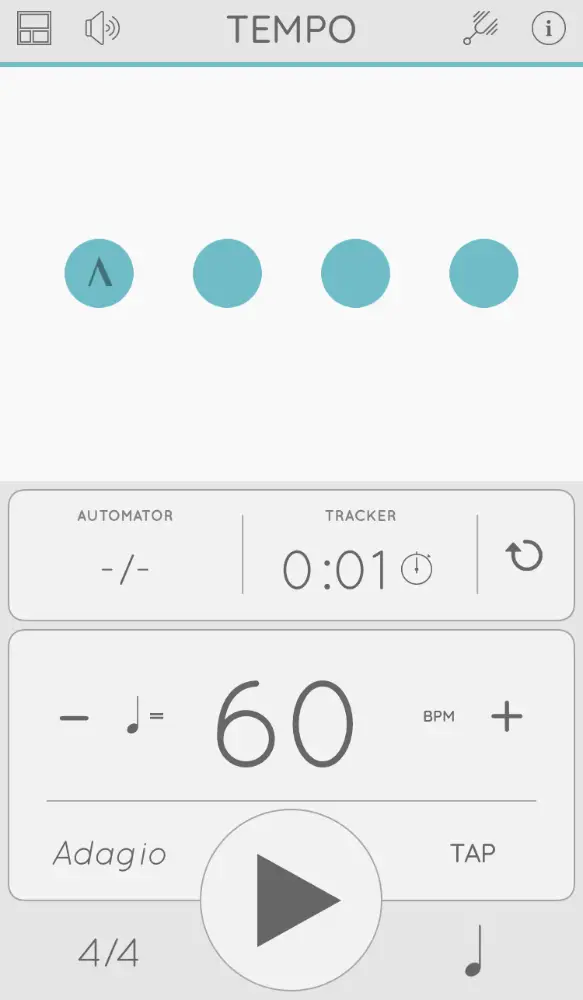
Metronome click
A metronome is a must-have gadget for every drummer. It helps to improve your time and become a more stable drummer.
There are several metronome apps which are really useful, which you can download to your smartphone.
An all-time classic is the Tama Rhythm Watch, which you might consider as a professional metronome device which can be attached to your drum set.
16 (EASY) SINGLE STROKE ROLL EXERCISES
In the following paragraphs, I will show you how these single stroke roll exercises work.
The concept is very simple!
Exercise #1
Exercise #1 is the very basic version of the single stroke roll drum rudiment.
It looks like this:

Basic single stroke roll
You should practice it starting with your right hand and also with your left hand.
What's the difference?
You need a metronome click as a reference point to make it clear which version you are playing.
Why?
Imagine playing the single stroke roll for a longer period of time.
After a while, you will forget whether you started playing the exercise, leading with your right or left hand.
That's why it is a good idea (a must) to use a metronome click every time you practice drum rudiments like this, the double stroke roll, single paradiddle and others.
Using a click also helps to improve your time!
Exercise #2
If you are new to these kinds of exercises, you should practice them at very slow tempos.
In the 2nd exercise, you start doubling the last (4th) 16th note, so that it becomes two 32nd notes.
It looks like this:

Single stroke roll with 32nd notes
Exercise #3
In the 3rd exercise, you need to double the 3rd 16th note.
The exercise looks like this:

Doubling the 3rd note of the single stroke roll
Exercise #4
Now, you should get the idea of how this whole PDF works.
Right?
In exercise #4 the second 16th note will become two 32nd notes, and it looks like this:

Doubling the 2nd 16th note
Exercises #5 to #16
The rest is more or less obvious.
You double every single 16th note to create 32nd notes.
Continue until you play a complete measure of 32nd notes (exercise #16).
Over time, you will be able to increase the tempo step by step.
But remember:
Precision and control is the ultimate goal.
Tempo is the icing on the cake!
How to play a single stroke roll
As mentioned above, the single stroke roll is the most intuitive drum rudiment ever!
Most children would play RLRL or LRLR etc. when catching a pair of drumsticks for the first time.
Although the single stroke roll seems to be easy to play, it's a bit deceiving too!
Why?
Being able to play a proper and even single stroke roll takes a lot of time and commitment to a drummer's hand and finger technique.
#1 Pick a slow tempo
The most important thing to pay attention to is an even single stroke played by each hand.
To achieve this, you should pick a very low tempo. You have to be able to control the evenness of the strokes and the loudness too.
#2 Practice in front of a mirror
When practicing something new, you have to become aware of what you do right and what is going wrong.
Therefore, you should practice an exercise like this in front of a mirror to watch your own playing.
This way you will be able to notice small differences between your arms, hands, and your fingers.
How to gain single stroke roll speed
Some drummers are able to play unbelievably fast!
This is probably one of the fastest single stroke roll drummers, I have ever seen.
If you know drummers who can play it even faster, please leave a comment below.
Subscribe to my YT-channel and get free drum lessons for beginners.
Although most humans are limited in their physical abilities, single stroke roll speed can be practiced until a specific point.
This is how:
First, you should practice each single stroke roll exercise as precise as possible and several times a week.
That means:
If you just started practicing your first drum rudiments, and you want to learn more, please have a look at the resources box.
There you will find some books which will help to improve your technique.
The fastest single stroke roll
Here are some examples of the fastest single stroke rolls ever played.
Tom Grosset
I am not quite sure, if it's Tom Grosset holding the single stroke roll record or the next drummer, Riccardo Merlini.
Anyway, 1200 strokes in 60 seconds is fast, really really fast.
Subscribe to my YT-channel and get free drum lessons for beginners.
Riccardo Merlini
Riccardo Merlini is another superfast single stroke roll drummer / record holder.
Subscribe to my YT-channel and get free drum lessons for beginners.
But aiming for such speed shouldn't be the 1st thing you are practicing for. Making music isn't about speed, IMO.
Single stroke roll technique
Now, that we talked about how to control the single stroke roll technique, we still must talk about what to do with your arms, wrists, hands, and fingers.
Unfortunately, this topic opens up a deep rabbit hole which we cannot explore in complete detail here.
There are several techniques, which you will often hear / read about when searching for the correct approach on how to play drum rudiments and thus, the single stroke roll.
How to hold the drumsticks
One of the very first questions, students ask is how to hold the drumsticks.
There are, with many overlaps, 4 main “grips” you can use:
#1 German Grip
The German Grip mainly utilizes your wrists while playing.
This technique is ideal for playing accents, whereas gaining speed using the German Grip can become a challenge.
#2 Matched / American GRIP
The Matched or American Grip is a more relaxed way to hold your drumsticks.
Holding the drumsticks using the Matched Grip combines the German Grip and the French Grip.
That means, that you will utilize your wrists and your fingers too, while playing drums.
#3 French Grip
The French Grip takes advantage of your fingers while holding the drumsticks.
So to say, this technique is the complete opposite to the German Grip.
Using the French Grip, limits the range of motions in your wrists and playing accents using this technique becomes more difficult.
#4 Traditional Grip
The Traditional Grip is the old-school way of holding drumsticks, whereas right-handed drummers use this technique in their left hands and vice versa.
Since the Traditional Grip isn't always ideal when playing on a drum set, educators tend to teach the Matched Grip nowadays.
Single stroke roll finger technique
There are specific techniques which incorporate your fingers while playing the single stroke roll.
The French Grip makes use of your fingers and allows high tempo playing.
More single stroke roll rudiments
Yes, there are more single stroke rudiments, which you can learn:
What else is important?
Playing a perfect single stroke roll drum rudiment isn't easy, and it will take time, commitment and a daily practice routine to perfect this sticking.
The most critical thing, IMO, is patience!
Don't try too hard and start practicing at very low tempos.
First, you need to create a rhythmic and technical foundation from where you can build up control, speed, and a good sounding single stroke roll.
Please let me know in the comments how it works!
Talk soon and enjoy playing drums!







